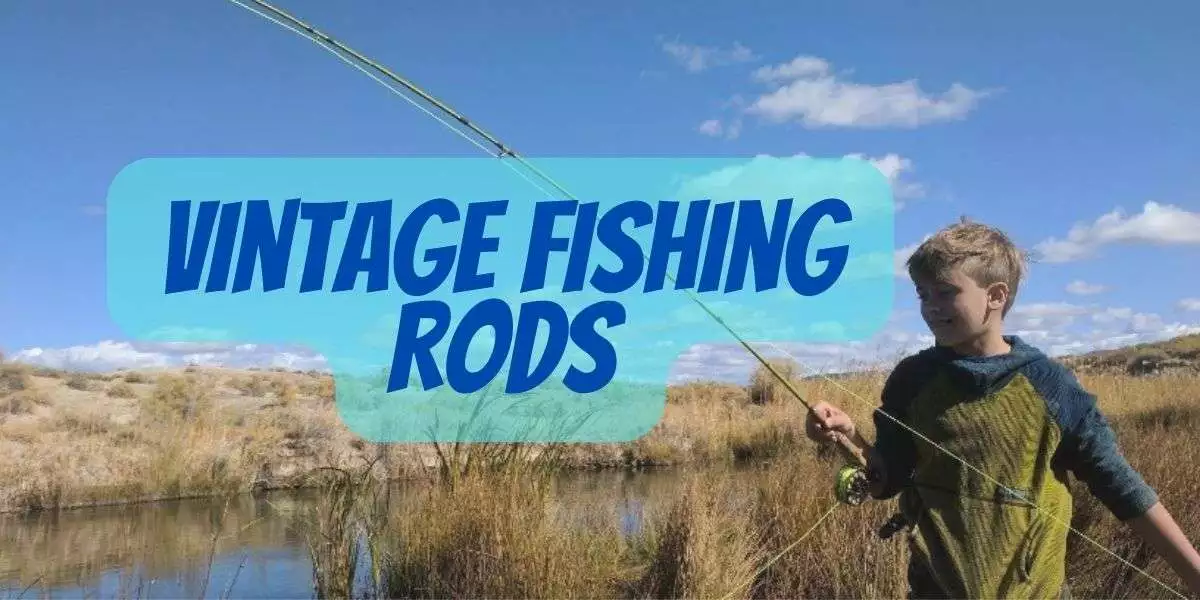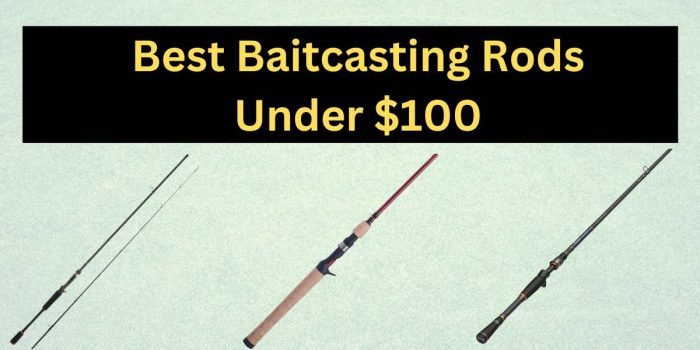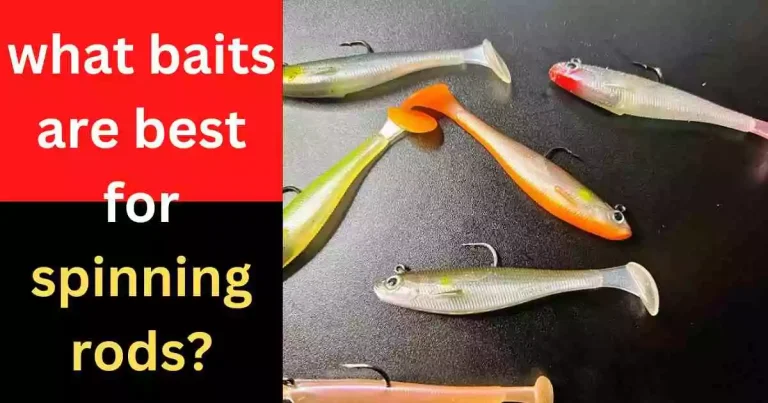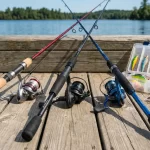I still remember the day I stumbled upon my grandfather’s old bamboo fishing rod in the attic – it was love at first sight! That dusty, silk-wrapped relic sparked a lifelong passion for vintage fishing rods, and I’m not alone.
For many anglers, these rods represent a bygone era of craftsmanship and tradition. But identifying these treasures requires more than just nostalgia – it demands a keen eye for detail and a grasp of fishing history.
In this guide, I’ll share my 25+ years of experience to help you recognize and appreciate these relics of angling history, and maybe even uncover a hidden gem worth a small fortune.
Key Takeaways:
- Material matters! Vintage fishing rods are often made from classic materials like split bamboo, solid fiberglass, or hardwoods like ash, which can reveal clues about the rod’s age and intended use.
- Look for the maker’s marks! Brand names like Heddon and Orvis, along with embossed logos, stamped markings, or decals, can signal a rod’s pedigree and potentially its model, making research a fascinating part of the identification process.
- Construction counts! Examining the rod’s construction, including the number of sections, rod blank shape, and guide type, provides valuable insights into the rod’s history and value.
- Value is multifaceted! Determining the value of a vintage fishing rod involves considering factors like rarity, condition, maker reputation, and historical significance, making each rod a unique piece of functional art.
- Every rod tells a story! Identifying vintage fishing rods is a journey of discovery, where every nick, scratch, and faded inscription whispers tales of past adventures on the water, making each find a potential treasure trove of angling history.
The Allure of Vintage Fishing Rods

While the thrill of reeling in a big catch is undeniable, for many anglers like myself, the true magic lies in the tools of the trade – particularly vintage fishing rods.
Fascination began in my grandfather’s attic
On dusty afternoons spent rummaging through my grandfather’s attic, I stumbled upon a treasured relic that would spark a lifelong passion: a vintage bamboo pole with faded silk wrappings.
This wasn’t just a tool for catching fish; it was a window into the past, a testament to the craftsmanship and angling tradition.
A tangible link to a bygone era
Bygone eras whispered secrets through the worn guides and weathered wood, transporting me to a time when craftsmanship reigned supreme, and each rod was a unique piece of functional art.
The allure of vintage fishing rods lies in their ability to connect us to a bygone era, one where every rod was a labor of love, crafted with precision and care.
These rods represent a time when the art of fishing was not just about catching fish, but about the experience itself.
The intricate details, the feel of the wood or bamboo beneath your hands, the satisfaction of landing a fish on a rod that’s been passed down through generations – it’s an experience that’s hard to replicate with modern rods.
Appreciating the Craftsmanship

Even the most seasoned anglers can appreciate the beauty and craftsmanship that goes into creating a vintage fishing rod.
These rods are not just mere tools for catching fish but rather works of art that showcases the skill and dedication of their makers.
Craftsmanship and angling tradition
Fishing’s rich heritage is deeply rooted in the craftsmanship of vintage rods. Angling’s earliest pioneers relied on rods crafted from natural materials like bamboo, ash, and hickory, which demanded patience, skill, and attention to detail.
Each rod was a testament to the artisan’s expertise, reflecting the era’s values of quality and durability.
A keen eye for detail required
To truly appreciate the craftsmanship of a vintage fishing rod, you need to develop a keen eye for detail.
Look for the subtle nuances that set these rods apart from their modern counterparts – the intricate wrapping patterns, the precision-cut guides, and the carefully shaped reel seats.
It’s the little things that matter when evaluating a vintage rod’s craftsmanship. Check for signs of hand-finishing, such as subtle imperfections in the wrapping or tiny scratches on the guides.
These imperfections are a testament to the human touch that went into creating the rod. A well-crafted rod exudes a sense of pride and dedication, and it’s this attention to detail that sets vintage rods apart from mass-produced modern rods.
By recognizing and appreciating these details, you’ll gain a deeper understanding of the rod’s history and value.
Identifying Vintage Rod Materials
Unlike modern rods crafted from graphite or fiberglass, vintage rods often boast classic materials like split bamboo, solid fiberglass, or hardwoods like ash. Each material tells a story about the rod’s age and intended use.
Wood, fiberglass, or graphite?
An examination of the rod’s material composition can reveal valuable clues about its age and intended use.
For instance, split bamboo was a hallmark of high-end rods in the early 20th century, prized for its strength, flexibility, and responsiveness.
Inspecting guides and reel seats
Identifying the type of guides and reel seats used on the rod can also provide insight into its age and construction.
Early guides were often made of simple wire loops, while later models incorporated agate rings or chrome plating for smoother line flow.
Fiberglass rods, for example, often feature chrome-plated guides, while high-end bamboo rods might boast agate rings.
Don’t forget to scrutinize the reel seat, as its style and materials can be strong indicators of age. Pay close attention to any corrosion or wear on the guides and reel seat, as this can affect the rod’s overall value.
Examining wraps and finishes
On closer inspection, the wraps and finishes on a vintage rod can reveal a wealth of information about its construction and age.
Look for details like the type of thread used, the pattern of the wraps, and any distinctive markings or logos.
Plus, the finish on a vintage rod can be a dead giveaway about its age. For instance, early rods might feature a glossy, varnished finish, while later models might boast a more matte, epoxy-based coating.
Be sure to examine the wraps and finishes under different lighting conditions to reveal any subtle details.
If you’re still stumped, online forums like Vintage fishing pole identification – Main Forum – SurfTalk can be a valuable resource for identifying and dating vintage rods.
Construction Clues
Many vintage fishing rods hold secrets to their age and authenticity within their construction. By examining the rod’s build, you can uncover valuable clues about its origins and potential value.
Examining rod’s construction clues
One of the most telling signs of a vintage rod’s age is its construction. Look for details like the number of sections, the shape of the rod blank (hexagonal, pentagonal, or solid built), and the type of guides used.
Early guides were often made of simple wire loops, while later models incorporated agate rings or chrome plating for smoother line flow.
Ferrules, tips, and butt caps
Construction of ferrules, tips, and butt caps can also reveal a rod’s age and craftsmanship. Check for:
- Ferrule material: Early rods often used metal or wooden ferrules, while later models incorporated more durable materials like chrome or ceramic.
- Tip-top design: Vintage rods often feature distinctive tip-top designs, such as ornate metal caps or intricately wrapped guides.
- Butt cap style: Butt caps can provide clues about the rod’s era, with older rods featuring simpler, more functional designs.
After examining these construction clues, you’ll be well on your way to identifying the era and potential value of your vintage fishing rod.
This attention to detail is crucial, as even the smallest construction features can significantly impact a rod’s value.
For instance, a rod with ornate metal ferrules and agate guides may be more valuable than one with simpler, mass-produced components.
Measuring length and weight
Measure the rod’s length carefully, taking note of any unusual or custom lengths. Weigh the rod to determine its overall weight and balance, which can be indicative of its intended use and era.
Rods from different eras often exhibit distinct weight and balance profiles. For example, older rods may be heavier and more tip-heavy, while modern rods tend to be lighter and more balanced.
Recognizing Maker Marks and Logos
Your first step in uncovering the secrets of a vintage fishing rod is to identify the maker marks and logos that can reveal its origins. These subtle signs can be the key to unlocking the rod’s history and value.
Researching manufacturer histories
Maker reputations are built on quality, innovation, and tradition. Researching the histories of iconic brands like Heddon, Orvis, and others can help you understand the context in which your rod was crafted.
Delve into their timelines, notable models, and innovations to better appreciate the rod’s significance.
Deciphering serial numbers and codes
Codes and serial numbers can be cryptic, but they hold valuable information about the rod’s production date, model, and even batch number. Crack the code, and you’ll uncover a wealth of details about your rod’s past.
It’s imperative to examine these codes carefully, as they can be faint, worn, or even hidden. Look for stamped numbers, etched markings, or subtle engravings that might reveal the rod’s secrets.
Don’t be afraid to use a magnifying glass or consult with experts to decipher the codes.
Authenticating signatures and stamps
On the rod, you might find signatures, stamps, or decals that authenticate its maker and model. These marks can be subtle, so inspect the rod carefully, paying attention to the reel seat, guides, and butt cap.
Serial numbers, model designations, and even the maker’s signature can be found in these hidden areas. Verify these marks against manufacturer records or collector databases to ensure your rod is genuine and valuable.
By recognizing these maker marks and logos, you’ll be one step closer to uncovering the secrets of your vintage fishing rod and potentially uncovering a hidden treasure.
Valuation Factors

Keep in mind that determining the value of a vintage fishing rod is a complex process that involves evaluating multiple factors. Here are some key considerations:
- Rarity: How common is the rod, and are there many others like it?
- Condition: What is the rod’s overall state, and are there any signs of wear or damage?
- Demand: Is there a strong market for the rod, and are collectors actively seeking it out?
- Provenance and historical significance: Does the rod have a rich history, and is it associated with a notable angler or event?
Knowing these factors will help you make a more informed assessment of your vintage fishing rod’s value.
Valuation influenced by multiple factors
Influenced by a combination of these factors, the value of a vintage fishing rod can fluctuate greatly. For instance:
- Rarity can increase a rod’s value, especially if it’s a limited edition or hard-to-find model.
- Condition plays a significant role, as a rod in excellent condition will generally be more valuable than one showing signs of wear.
- Demand can drive up prices, especially if collectors are actively seeking out a particular type of rod.
This interplay of factors means that each vintage fishing rod is unique, and its value will depend on a careful evaluation of these influencing factors.
Condition, rarity, and demand
With these three factors in mind, it’s important to examine your vintage fishing rod closely:
Condition is a critical aspect of valuation, as it directly affects the rod’s functionality and aesthetic appeal.
A rod in excellent condition, with minimal signs of wear, will generally command a higher price than one showing signs of damage or neglect.
Provenance and historical significance
Valuation is also influenced by a rod’s provenance and historical significance:
A vintage fishing rod’s history can greatly impact its value. For instance, a rod used by a famous angler or involved in a notable fishing tournament can increase its value significantly.
Similarly, rods associated with iconic brands or manufacturers can carry a premium due to their historical significance.
Summing up
Following this journey through the world of vintage fishing rods, I hope you’re now equipped to recognize the hidden gems that lie within dusty tackle shops and grandfathers’ attics.
With a keen eye for material composition, construction details, and maker marks, you’ll be well on your way to uncovering the secrets of these angling relics.
Bear in mind, it’s not just about the monetary value – it’s about the stories these rods tell and the connections they forge to the past.
So, go ahead, take a closer look, and who knows, you might just reel in a piece of history!








